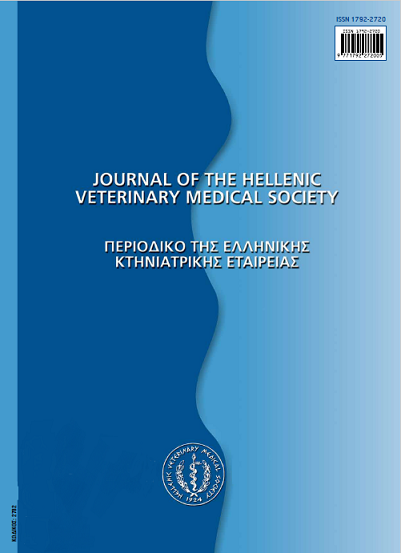Contemporary aspects on the immunopathogenesis of skin lesions in canine leishmaniosis (Leishmania infantum)
Resumen
Dog's immunologic reaction to Leishmania infantum inoculation may determine not only the diversity of the observed skin lesions but also the susceptibility or resistance of the dog to develop the disease.The expression of costimulatory molecules, such as B7, by infected macrophages along with the action of cytokines IL-12 and IFN-γ, results in Thl CD4+ cell activation and their infiltration of the dermis. The latter, in turn, activate macrophages to kill the parasite. Failure of the infected macrophages to express these molecules, results in dermis infiltration with Th2 CD4+ cells and macrophage in activation which facilitates the spreading of parasites and thus the perpetuation of the infection. The normal function of Thl CD4+ cells depends, at least partially, on FasL expression. In the exfoliative dermatitis of canine leishmaniosis the immune response is more efficient than in dermal nodules while in the ulcerative dermatitis a mixed type of immune response occurs. In the exfoliative dermatitis, Τ cells predominate in the inflammatory infiltrate while granulomatous sebaceous adenitis is a common histopathological finding. CD4+:CD8+ ratio is approximately 1 and in both immunocytes half of them are memory cells. Extrapolating from immunopathology, the use of canine CD28 molecule along with that of IL-12 and IFN-γ, may be quite useful in both the antileishmanial treatment and the preparation of an effective vaccine.
Article Details
- Cómo citar
-
PAPADOGIANNAKIS (E. Ι. ΠΑΠΑΔΟΓΙΑΝΝΑΚΗΣ) E. I., KOUTINAS (Α.Φ. ΚΟΥΤΙΝΑΣ) A. F., & KOUTINAS (X.Κ. ΚΟΥΤΙΝΑΣ) C. (2018). Contemporary aspects on the immunopathogenesis of skin lesions in canine leishmaniosis (Leishmania infantum). Journal of the Hellenic Veterinary Medical Society, 52(4), 249–256. https://doi.org/10.12681/jhvms.15453
- Número
- Vol. 52 Núm. 4 (2001)
- Sección
- Review Articles

Esta obra está bajo una licencia internacional Creative Commons Atribución-NoComercial 4.0.
Authors who publish with this journal agree to the following terms:
· Authors retain copyright and grant the journal right of first publication with the work simultaneously licensed under a Creative Commons Attribution Non-Commercial License that allows others to share the work with an acknowledgement of the work's authorship and initial publication in this journal.
· Authors are able to enter into separate, additional contractual arrangements for the non-exclusive distribution of the journal's published version of the work (e.g. post it to an institutional repository or publish it in a book), with an acknowledgement of its initial publication in this journal.
· Authors are permitted and encouraged to post their work online (preferably in institutional repositories or on their website) prior to and during the submission process, as it can lead to productive exchanges, as well as earlier and greater citation of published work.











